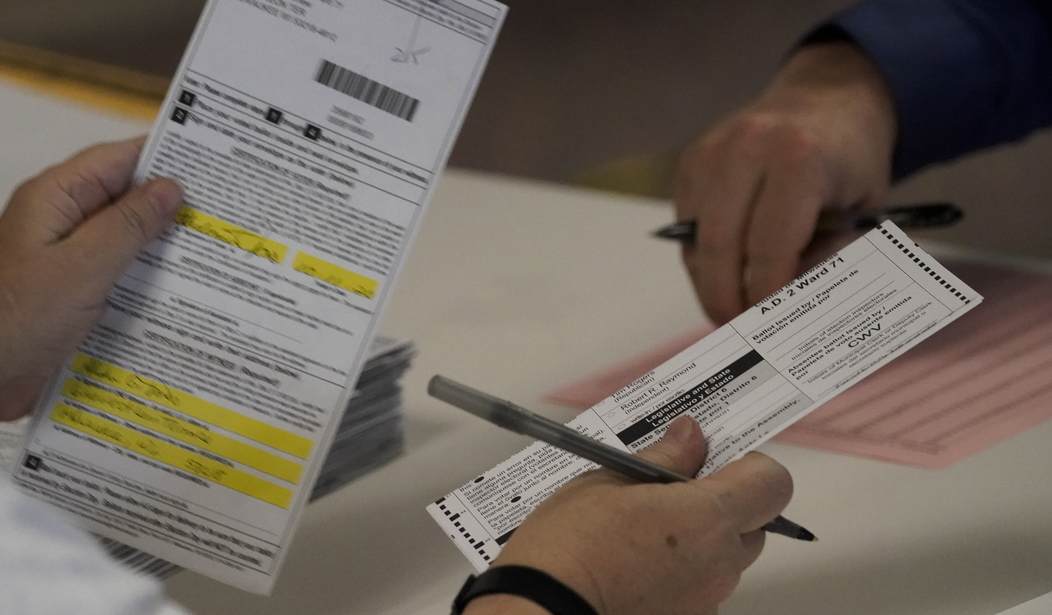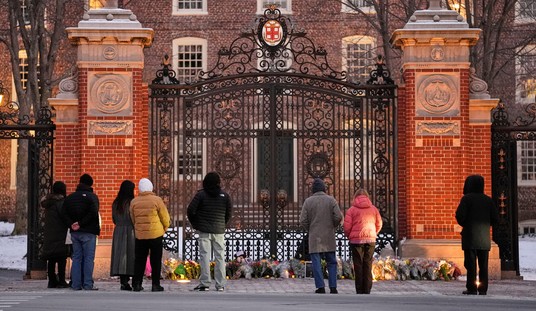The effort by the Trump Campaign to reverse the outcome of the election in Wisconsin is beginning to gain some attention — it now has my attention.
Reversing Georgia, Pennsylvania, and Wisconsin are necessary to call into question what will happen in the Electoral College on December 14.
As explained in this piece yesterday, in Georgia the focus is on invalid voter registrations which used a mail-drop or business location as a “residence” address on the voter and mail-in ballot application.
Pennsylania is a mish-mash of various claims, most of which are traceable back to partisan decisions of the state’s Supreme Court, which makes them all reachable in an omnibus review by the US Supreme Court.
But the approach in Wisconsin has been a bit of a mystery to me until now.
The margin of Biden’s “victory” in Wisconsin is only 43,000 votes out of 3.2 million cast. The reversal of Wisconsin from 2016 pretty much comes down to the additional 45,000 votes Biden received in Dane County compared to what Hillary Clinton received in 2016. That increase of 43,000 votes — from 217,000 to 260,000 — was an increase of 20%. Where did they all come from?
Wisconsin has same-day voter registration — meaning it was possible for a voter to register at the polls and to cast a ballot. But Wisconsin also requires a photo-identification for any person who votes in-person at the polls on Election Day.
But Wisconsin also has a particular class of voters who are eligible to vote by absentee ballot, and voters who qualify for that particular class are not required to submit a copy of a photo ID with their ballot when they mail it in. This is a bit convoluted, so I’ll lay it out step-by-step.
There are a variety of ways to register without having to show a photo ID. All that is needed is a document to establish “residency”, and several types of documents such as a residential lease, utility statement, etc., are acceptable so long as both a name and address are listed.
Once registered, a voter can apply for an absentee ballot, and Wisconsin law allows all electors to vote by absentee ballot if they so chose. But, Wisconsin law also requires strict compliance with the procedural process governing absentee voting, and any violation of the process invalidates the votes cast.
6.84 Construction.
6.84(1)(1) Legislative policy: The legislature finds that voting is a constitutional right, the vigorous exercise of which should be strongly encouraged. In contrast, voting by absentee ballot is a privilege exercised wholly outside the traditional safeguards of the polling place. The legislature finds that the privilege of voting by absentee ballot must be carefully regulated to prevent the potential for fraud or abuse; to prevent overzealous solicitation of absent electors who may prefer not to participate in an election; to prevent undue influence on an absent elector to vote for or against a candidate or to cast a particular vote in a referendum; or other similar abuses.
(2) Interpretation: Notwithstanding s. 5.01 (1), with respect to matters relating to the absentee ballot process, ss. 6.86, 6.87 (3) to (7) and 9.01 (1) (b) 2. and 4. shall be construed as mandatory. Ballots cast in contravention of the procedures specified in those provisions may not be counted. Ballots counted in contravention of the procedures specified in those provisions may not be included in the certified result of any election.
This is the focus of the Trump Campaign’s post-election efforts — to identify absentee ballots in Wisconsin that were not cast ion strict compliance with the procedures set forth in the statute for use of such ballots.
Here is where the efforts get interesting:
6.86 Methods for obtaining an absentee ballot.
(1)(a) Any elector of a municipality who is registered to vote whenever required and who qualifies under ss. 6.20 and 6.85 as an absent elector may make written application to the municipal clerk of that municipality for an official ballot by one of the following methods: 1. By mail. 2. In person at the office of the municipal clerk or at an alternate site under s. 6.855, if applicable. 3. By signing a statement and filing a request to receive absentee ballots under sub. (2) or (2m) (a) or s. 6.22(4), 6.24(4), or 6.25(1) (c). 4. By agent as provided in sub. (3). 5. By delivering an application to a special voting deputy under s. 6.875(6). 6. By electronic mail or facsimile transmission as provided in par. (ac). (ac) Any elector qualifying under par. (a) may make written application to the municipal clerk for an official ballot by means of facsimile transmission or electronic mail. Any application under this paragraph need not contain a copy of the applicant’s original signature. An elector requesting a ballot under this paragraph shall return with the voted ballot a copy of the request bearing an original signature of the elector as provided in s. 6.87(4). Except as authorized in ss. 6.87(4) (b) 2. to 5. and 6.875 (6), and notwithstanding s. 343.43(1) (f), the elector shall transmit a copy of his or her proof of identification in the manner provided in s. 6.87(1) unless the elector is a military elector or an overseas elector or the elector has a confidential listing under s. 6.47(2)…..
(ar) Except as authorized in s. 6.875 (6), the municipal clerk shall not issue an absentee ballot unless the clerk receives a written application therefor from a qualified elector of the municipality. The clerk shall retain each absentee ballot application until destruction is authorized under s. 7.23 (1).(2)(a) An elector who is indefinitely confined because of age, physical illness or infirmity or is disabled for an indefinite period may by signing a statement to that effect require that an absentee ballot be sent to the elector automatically for every election. The application form and instructions shall be prescribed by the board, and furnished upon request to any elector by each municipality. The envelope containing the absentee ballot shall be clearly marked as not forwardable. If any elector is no longer indefinitely confined, the elector shall so notify the municipal clerk
The “(ac)” provision that is bolded and italicized was added in 2020. All applications for absentee ballots that are submitted via email or facsimile must be accompanied by a copy of the elector’s photo ID — “Except as authorized in ss. 6.87(4)(b) 2. to 5.” Copies of all such applications are to be retained by the Clerk in each County.
The interplay between 686(2)(a) (“indefinite confinement”) and the requirements for providing a photo ID seem to be the basis for the inquiry being conducted by the Trump Campaign. Why? Because voters who receive an absentee ballot after stating on their application that they fit within the “indefinitely confined” classification do not need to provide a copy of a photo ID when they return their completed absentee ballot for tabulation in the election. Section 6.87(4)(b) 2 states:
(4)(b) 2. …. if the absentee elector has applied for and qualified to receive absentee ballots automatically under s. 6.86(2) (a), the elector may, in lieu of providing proof of identification, submit with his or her absentee ballot a statement signed by the same individual who witnesses voting of the ballot which contains the name and address of the elector and verifies that the name and address are correct.
When you consider these provisions in combination with each other, after the modifications made to Wisconsin election law in 2020, you can knit together a process that allows the following to happen:
- An individual can register to vote without needing to submit a photo ID to establish their identity — they only need a document that provides proof of residence at a Wisconsin street address.
- All registered electors in 2020 were allowed to vote by absentee ballot.
- The application for an absentee ballot can be requested via email based on a 2020 change to the election statutes, without submission of a photo ID.
- An elector requesting an absentee ballot can self-designate as being “indefinitely confined by age, physical illness, or infirmity, or is disabled for an indefinite period of time.”
- Anyone who receives an absentee ballot based on the self-designation that they are “indefinitely confined” can return the absentee ballot without submitting a copy of a photo ID in the same manner required of others casting absentee ballots.
But, because “strict compliance” with the rules and requirements of absentee voting is required by Wisconsin law as noted at the outset above, persons who “self-designated” as being “indefinitely confined” — and evaded the photo ID requirement as a result — cast unlawful ballots that cannot be included in the certified result of any election.
In the comments of an earlier piece I did on the status of the Trump Campaign’s legal efforts in Georgia, there was the following message from a reader:
I am from Wi. I am a poll worker that process absentee ballots in my community. I am also very familiar with our voting laws, because years ago a group of us ladies worked with our legislature to fix many of voter laws to at least stop some of ways to cheat, which the Dems. are very good at. They are still at it. When you apply for an absentee ballot you are given 3choices. 1, FOR this election only.2 For the entire year.3 For Indefently confined ONLY. Anyone that makes a a false statement can be fined $1,ooo, 6 months in prison. If you apply for the third one you do not have tp show a photo I.D. The County clerks in Dane CTY. and Milwaukee CTY.,told people to use the third one. What a SUPRISE. Now we have all those mystery names on the voter roles plus the ones they refused to remove that have died or moved.If you don’t have clean voter roles, then you can’t honest elections. They also broke 2 other of our election laws.
Emphasis added.
In fact, prior to the primary election last spring, the Dane and Milwaukee County Clerks made public statements to that effect — for which the Wisconsin Supreme Court rebuked them in this order.
The recount now underway in Dane and Milwaukee Counties is likely for the limited purpose of just trying to reduce the margin from 20,000 votes to some lesser number. That lower number then becomes the “target” in the search for absentee ballots where the application for the absentee ballot — especially for newly registered voters — included a “self-certification” that the elector was “indefinitely confined”.
I will take a look at some pending court challenges, and how an “election contest” lawsuit might play out in a story later today.














Join the conversation as a VIP Member